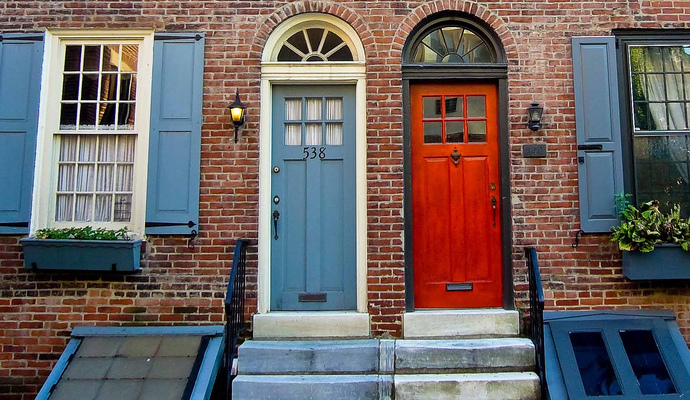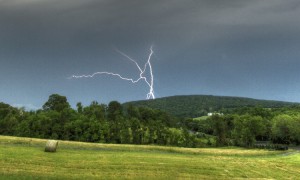Installing Storm Windows to Improve Your Home’s Efficiency
Installing storm windows is a relatively simple, cost-efficient alternative to replacing your windows entirely, and helps with energy efficiency. You can hire someone to do it, or take on the project yourself.
If you live in an older home in Philadelphia, your windows are probably not winning any medals when it comes to energy efficiency. You might feel chilly drafts by the window in the winter or blasts of heat in the summer. Maybe you’ve seen water seeping onto the windowsill when it rains. Replacing the windows in your home can be pricey, costing up to $1,000 per window, according to HomeAdvisor.
Installing storm windows is a relatively simple, cost-efficient alternative to replacing your windows entirely. HomeAdvisor estimates that it costs around $2,000 for the project, if you hire someone to do it. If your home is on the Philadelphia Register of Historic Places, storm windows might be the only way to go, as you need permission for any exterior changes made to the home.
Storm Window Types
When installing storm windows, you can choose between exterior windows and interior windows. Interior storm windows might be your best bet if you’re in a historic home or if you’re in an apartment that’s many floors up. You can’t see the interior windows, also called window inserts, from the outside of the house, so they don’t impact the historic facade of your home at all. Interior storm windows tend to be better at keeping air out, too, according to the Department of Energy.
Exterior storm windows don’t replace the existing window, but rest on the outside of the original window. You can find exterior storm windows with a triple track or with two tracks. Triple track windows consist of a screen and two panes of glass or plastic. You can move all three panes up and down as needed. Two track windows have an inner glass pane that moves up and down, and an exterior screen on the lower half. Exterior windows might not be an option at all if you live in an older, historic home, according to the Philadelphia Rowhouse Manual.
Benefits
Along with being less expensive to install than replacement windows, storm windows can reduce your home’s heating and cooling bills. Outside air stays out of your house, allowing you to better control the indoor climate. The air space between the original window and the storm window has an insulating effect, which also helps lower your energy bills.
Installation
Even if you’re not usually the do-it-yourself type, installing storm windows is a project you can take on. The process is simple, according to This Old House, and can take as little as 10 minutes per exterior window. Interior window inserts are even simpler to install, as they simply press into place.
There are a few things to keep in mind when you install the windows. The windows need to be square with the window frame, or else they won’t be able to effectively keep out the air. This Old House points out that exterior windows will either have a Western or Eastern casing. Western casing windows have a 5/8-inch stop on the inside of the frame. Eastern casing windows don’t have a stop. Storm windows that will fit in an Eastern casing window need to be slightly larger than the current window, while storm windows that will fit in a window with a Western casing should be slightly smaller.
As the weather finally starts to warm up, spring is the ideal time to install storm windows in your Philadelphia home — summer will be here before you know it.
Image Source: Flickr
[cf]skyword_tracking_tag[/cf]





4 Comments
Installing Storm Windows to Improve Your Home’s Efficiency | Janet Glowacki's Blog
May 14, 2014[…] post Installing Storm Windows to Improve Your Home’s Efficiency appeared first on Coldwell Banker Blue […]
Installing Storm Windows to Improve Your Home’s Efficiency | Earl Forbes Blog
May 14, 2014[…] There are a few things to keep in mind when you install the windows. The windows need to be square with the window frame, or else they won’t be able to effectively keep out the air. This Old House points out that exterior windows will either have a Western or Eastern casing. Western casing windows have a 5/8-inch stop on the inside of the frame. Eastern casing windows don’t have a stop. Storm …read more […]
jresquival
February 7, 2017That’s good to know that the air space between window and storm window form a layer of insulation. I guess air isn’t good at conducting heat. I’m doing some home improvements so I’ll consider getting some storm windows.
Lindsay Listanski
February 8, 2017Glad this post helped!